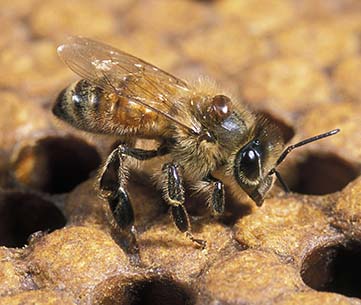



Article by: Hari Yellina
A fresh varroa mite discovery in Narrabri in the state’s North West Slopes has been confirmed by the NSW Department of Primary Industries and is connected to previously reported occurrences in the Newcastle area of the state’s Hunter region. Acting Chief Plant Protection Officer Dr Chris Anderson stated that the NSW DPI and the apiary industry had “an incredible opportunity to exterminate this biosecurity danger and stop the advent of the varroa mite” due to the close epidemiological ties in all occurrences so far. The honeybee beehives at this site had recently been transported to Narrabri after being housed for a number of months close to an already infested building in the Newcastle area, according to Dr Anderson.
Beekeepers continued to report the infestation, and NSW DPI authorities conducted investigations and designated a new emergency zone surrounding the site as a result. Since the varroa mite was initially discovered during routine monitoring at the Port of Newcastle on June 22, NSW DPI has now declared emergency zones around a total of 19 affected facilities. This includes additional newly discovered instances that have been confirmed in the Hunter region’s Lambton and Ferodale, which are located in previously designated zones. To “ensure beekeepers are informed,” NSW DPI has been collaborating with organisations and stakeholders in the apiary industry.
According to Dr Anderson, “DPI has put in place major measures to stop the threat from spreading and is being aided by the apiary industry, Local Land Services, NSW Police, NSW Rural Fire Service, and the larger community.” In order to help ensure the bee industry’s continued success, the NSW DPI continues to ask everyone who has purchased honeybees (including queen bees, nucleus hives, and hives with honeybees) from inside the 50-kilometer emergency notice zone of the Port of Newcastle to report them. Dr Anderson believes this will “open up the mobility of honeybees in the rest of NSW, notably around almond pollination.”
Beekeepers are reminded of the group permit that enables the relocation of honeybees and hives in flood-prone locations to higher ground on the property or, if that is not possible, to another location within the same emergency zone. “The hives cannot be relocated back to their original location once they have been transferred in accordance with this permit. Any change in location must be reported using the online form found at www.dpi.nsw.gov.au/varroa mite, according to D. Anderson.